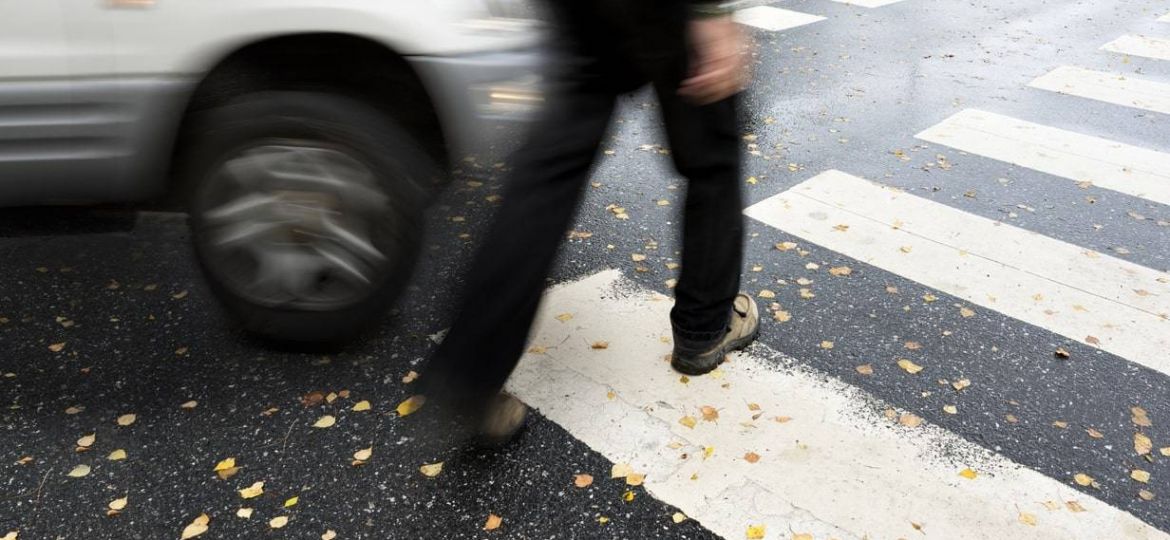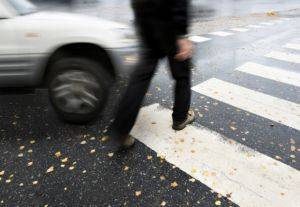
Pedestrian Deaths Rise on Florida Roads: What’s Behind the Deadly Trend and Your Legal Rights
Florida has earned the devastating distinction of being the most dangerous state in America for pedestrians, with pedestrian fatality rates that far exceed the national average. Recent data shows that pedestrian deaths have reached crisis levels across the state, with South Florida cities consistently ranking among the most dangerous places to walk in the entire United States.
This alarming trend isn’t just a statistic—it represents real families torn apart by preventable tragedies, survivors facing life-altering injuries, and communities grappling with infrastructure that prioritizes vehicle speed over human safety. Understanding what’s driving this crisis and knowing your legal rights when pedestrian accidents occur is crucial for victims and their families seeking justice and compensation.
The Scope of Florida’s Pedestrian Safety Crisis
Devastating Statistics That Tell the Story
Florida consistently leads the nation in pedestrian fatalities, accounting for approximately 20% of all pedestrian deaths nationwide despite having only about 6% of the U.S. population. In recent years, pedestrian deaths in Florida have increased even as overall traffic fatalities have declined in many other states.
South Florida’s Deadly Distinction The Miami-Fort Lauderdale metropolitan area regularly appears on lists of the most dangerous places for pedestrians in America. Cities like Hialeah, Miami, Fort Lauderdale, and Hollywood consistently rank in the top 10 most dangerous cities for pedestrians nationwide.
Vulnerable Populations at Greatest Risk The data reveals that certain groups face disproportionate risk:
- Adults over 65 account for nearly 20% of pedestrian fatalities despite representing a smaller portion of the population
- Hispanic and Black pedestrians face higher fatality rates than other demographic groups
- Low-income communities with limited access to vehicles rely more heavily on walking and face greater exposure to dangerous roadways
Recent Trends Making the Crisis Worse
Post-Pandemic Traffic Behavior Changes Since the COVID-19 pandemic, traffic patterns have changed dramatically. While overall traffic volumes initially decreased, dangerous driving behaviors increased significantly. Speeding, aggressive driving, and distracted driving have all become more common, making roads even more dangerous for pedestrians.
Larger, Deadlier Vehicles The shift toward larger SUVs and pickup trucks has made pedestrian accidents more deadly. These vehicles have higher front ends and larger blind spots, making it harder for drivers to see pedestrians and more likely that collisions will result in fatal injuries.
Infrastructure Lag Behind Development Rapid development across South Florida has created sprawling communities with inadequate pedestrian infrastructure. New developments often prioritize vehicle access while neglecting safe pedestrian pathways, crosswalks, and lighting.
What’s Driving Florida’s Pedestrian Crisis
Dangerous Road Design and Infrastructure
Stroads: The Deadly Hybrid Many of Florida’s most dangerous roads are “stroads”—a hybrid between streets and roads that combine high-speed traffic with frequent pedestrian crossing points, commercial driveways, and intersections. These designs create constant conflict between vehicles and pedestrians.
Missing or Inadequate Crosswalks Throughout South Florida, there are significant gaps in pedestrian infrastructure. Many busy roads lack adequate crosswalks, forcing pedestrians to cross at dangerous locations or walk long distances to find safe crossing points.
Poor Lighting and Visibility Many pedestrian accidents occur during dawn, dusk, or nighttime hours when visibility is reduced. Inadequate street lighting, particularly at crosswalks and bus stops, contributes significantly to accident risk.
Lack of Pedestrian Signals and Timing Even where crosswalks exist, pedestrian signals are often inadequately timed, giving pedestrians insufficient time to safely cross wide roads before traffic lights change.
Dangerous Driving Behaviors
Distracted Driving Epidemic The rise of smartphones and in-vehicle technology has created an epidemic of distracted driving. Drivers looking at phones, GPS devices, or entertainment systems are less likely to notice pedestrians, particularly at crosswalks and intersections.
Aggressive and Impatient Driving Florida’s heavy traffic and tourist-influenced driving patterns create frustration that leads to aggressive driving behaviors. Drivers often fail to yield to pedestrians at crosswalks or make dangerous turns without checking for pedestrians.
Impaired Driving Driving under the influence of alcohol or drugs significantly increases the risk of pedestrian accidents. Impaired drivers have reduced reaction times and impaired judgment, making them less likely to see and respond to pedestrians.
Speed as a Deadly Factor Higher speeds dramatically increase both the likelihood of pedestrian accidents and their severity. At 20 mph, pedestrians have a 90% chance of survival if struck; at 40 mph, survival rates drop to just 20%.
Urban Planning and Development Issues
Car-Centric Development Patterns South Florida’s development has historically prioritized vehicle access over pedestrian safety. Wide roads, large parking lots, and dispersed development patterns create environments where pedestrians are afterthoughts.
Tourism and Unfamiliar Drivers Florida’s tourism industry brings millions of visitors who are unfamiliar with local roads, traffic patterns, and pedestrian crossing areas. Tourist drivers are often distracted by GPS devices and unfamiliar surroundings, increasing accident risk.
Transit Access and Walking Need Many Florida residents rely on public transportation and must walk to bus stops, often along dangerous roads without sidewalks or adequate lighting. The lack of safe pedestrian infrastructure around transit stops creates dangerous conditions.
Common Types of Pedestrian Accidents in Florida
Intersection and Crosswalk Accidents
Despite having the legal right-of-way, pedestrians are frequently struck at intersections and marked crosswalks. These accidents often occur when:
- Drivers fail to yield during right turns
- Drivers run red lights or stop signs
- Drivers are distracted and don’t notice pedestrians
- Poor signal timing doesn’t provide adequate crossing time
Roadway Crossing Accidents
When safe crosswalks aren’t available, pedestrians are forced to cross at dangerous locations, leading to accidents in:
- Mid-block crossings on busy roads
- Areas near shopping centers and strip malls
- Locations where sidewalks are interrupted or missing
- Highway-style roads with high speed limits
Parking Lot and Driveway Accidents
Private parking lots and driveways are common locations for pedestrian accidents, particularly involving:
- Backing vehicles in shopping centers
- Drivers entering or exiting parking spaces
- Poor visibility around parked cars
- Inadequate lighting in parking facilities
Public Transit Related Accidents
Accidents involving pedestrians near bus stops, transit stations, or while boarding/exiting public transportation often result from:
- Inadequate lighting and infrastructure around transit stops
- Drivers failing to stop for buses loading passengers
- Poor placement of bus stops along busy roads
- Lack of safe pedestrian access to transit facilities
Legal Rights of Pedestrian Accident Victims
Right-of-Way Laws in Florida
Florida Statutes Section 316.130 establishes pedestrian right-of-way rules, giving pedestrians the right-of-way in crosswalks and at intersections. However, the law also requires pedestrians to exercise due care for their own safety.
When Pedestrians Have Right-of-Way:
- At marked crosswalks
- At intersections, whether marked or unmarked
- When crossing at traffic signals
- In school zones and construction areas
Driver Obligations: Drivers must yield to pedestrians in crosswalks and exercise due care to avoid striking pedestrians, even when pedestrians don’t have the right-of-way.
Comparative Negligence in Pedestrian Cases
Florida follows a pure comparative negligence system, meaning pedestrians can recover damages even if they were partially at fault for the accident. However, their compensation will be reduced by their percentage of fault.
Common Defense Arguments:
- Pedestrian was jaywalking or crossing outside crosswalks
- Pedestrian was wearing dark clothing or not visible
- Pedestrian was under the influence of alcohol or drugs
- Pedestrian was distracted by a cell phone
Types of Compensation Available
Economic Damages:
- Medical expenses, including emergency treatment, surgery, and rehabilitation
- Lost wages and future earning capacity
- Property damage (personal belongings, assistive devices)
- Transportation and mobility equipment costs
Non-Economic Damages:
- Pain and suffering from injuries and recovery process
- Emotional distress and psychological trauma
- Loss of enjoyment of life and activities
- Scarring, disfigurement, and permanent disability impacts
Punitive Damages: In cases involving particularly reckless behavior, such as drunk driving or hit-and-run accidents, punitive damages may be available to punish wrongdoers and deter similar conduct.
Challenges Unique to Pedestrian Accident Cases
Bias Against Pedestrians
Unfortunately, there’s often an implicit bias that assumes pedestrians are somehow at fault for being struck by vehicles. This bias can affect:
- Police investigations and accident reports
- Insurance company claim handling
- Jury attitudes in personal injury cases
- Media coverage of pedestrian accidents
Evidence Collection Difficulties
Pedestrian accidents often occur quickly with limited witnesses, making evidence collection challenging:
- Skid marks and vehicle damage may be minimal
- Surveillance video may not capture the full sequence of events
- Witness accounts may vary significantly
- Physical evidence at the scene may be quickly cleaned up
Severe Injury Complications
Pedestrian accidents often result in severe injuries that complicate legal cases:
- Multiple surgeries and extended treatment periods
- Uncertain prognosis and long-term disability issues
- Complex medical evidence requiring expert testimony
- Significant future care needs difficult to calculate
The Role of Government Liability
Municipal Responsibility for Safe Infrastructure
Cities and counties have obligations to maintain reasonably safe roads and pedestrian infrastructure. Government liability may exist when:
- Dangerous road conditions are allowed to persist
- Pedestrian signals are improperly timed or maintained
- Crosswalks and signage are inadequate or missing
- Street lighting is insufficient for pedestrian safety
Sovereign Immunity Limitations
Florida’s sovereign immunity laws limit but don’t eliminate government liability for dangerous conditions. Successful claims against government entities require proving:
- The government entity had notice of the dangerous condition
- The condition created an unreasonably dangerous situation
- The government failed to take reasonable action to address the hazard
Design Defect Claims
When road design itself creates dangerous conditions for pedestrians, design defect claims may be possible against the government entities responsible for road planning and construction.
Insurance Challenges in Pedestrian Cases
PIP Coverage Limitations
Florida’s no-fault insurance system provides Personal Injury Protection (PIP) benefits to pedestrians struck by vehicles, but coverage is limited and often insufficient for serious injuries.
Uninsured and Hit-and-Run Accidents
Pedestrian accidents involving uninsured drivers or hit-and-run situations require creative legal strategies to identify compensation sources, including:
- Victim’s own uninsured motorist coverage
- Crime victim compensation funds
- Premises liability claims against property owners
- Government liability for dangerous conditions
Bad Faith Insurance Practices
Insurance companies often employ aggressive tactics in pedestrian cases, including:
- Arguing the pedestrian was at fault
- Disputing the severity of injuries
- Minimizing the impact of permanent disabilities
- Delaying claim processing to pressure quick settlements
How Fuentes & Berrio Fights for Pedestrian Victims
Immediate Investigation and Evidence Preservation
We respond quickly to pedestrian accident scenes to:
- Preserve physical evidence before it’s lost
- Interview witnesses while memories are fresh
- Obtain surveillance video from nearby businesses
- Work with accident reconstruction experts to determine causation
Combating Anti-Pedestrian Bias
Our attorneys understand the biases pedestrian victims face and work aggressively to:
- Present clear evidence of driver negligence
- Demonstrate compliance with pedestrian traffic laws
- Show how road design contributed to the accident
- Counter victim-blaming narratives with facts and expert testimony
Comprehensive Damage Documentation
We work with medical experts, life care planners, and economists to fully document:
- Current and future medical treatment needs
- Lost earning capacity and career impact
- Pain and suffering from severe injuries
- Lifestyle changes and adaptive equipment needs
Multi-Faceted Legal Strategy
Our approach includes pursuing all potential sources of compensation:
- Driver liability insurance claims
- Uninsured/underinsured motorist coverage
- Government liability for dangerous road conditions
- Premises liability against adjacent property owners
The Importance of Advocacy Beyond Individual Cases
Supporting Systemic Change
Pedestrian accident cases often reveal systemic infrastructure problems that endanger entire communities. We work with clients and community organizations to advocate for:
- Improved crosswalk design and placement
- Better street lighting and visibility
- Reduced speed limits in pedestrian-heavy areas
- Complete streets policies that prioritize pedestrian safety
Holding All Parties Accountable
By aggressively pursuing pedestrian accident cases, we help hold accountable:
- Negligent drivers who fail to watch for pedestrians
- Government entities that allow dangerous conditions to persist
- Developers who create pedestrian-hostile environments
- Businesses that contribute to unsafe pedestrian conditions
Your Rights Matter in Florida’s Pedestrian Crisis
If you or a loved one has been injured in a pedestrian accident, you’re not just a statistic in Florida’s pedestrian safety crisis—you’re a person whose life has been fundamentally altered by someone else’s negligence. You have rights, and those rights matter.
The attorneys at Fuentes & Berrio understand the unique challenges pedestrian accident victims face, from overcoming bias to dealing with severe injuries and complex liability issues. We have the experience, resources, and commitment necessary to fight for the full compensation you deserve while working to prevent similar tragedies from happening to others.
Don’t let insurance companies or at-fault parties minimize your claim or blame you for an accident that wasn’t your fault. Contact Fuentes & Berrio today for a free consultation. We’ll investigate your case thoroughly, fight against anti-pedestrian bias, and pursue every avenue for compensation available under Florida law.
Florida’s roads are dangerous for pedestrians, but that doesn’t mean you should accept inadequate compensation for your injuries. Let us fight for your rights and help ensure that those responsible for making our roads safer are held accountable for their failures.


